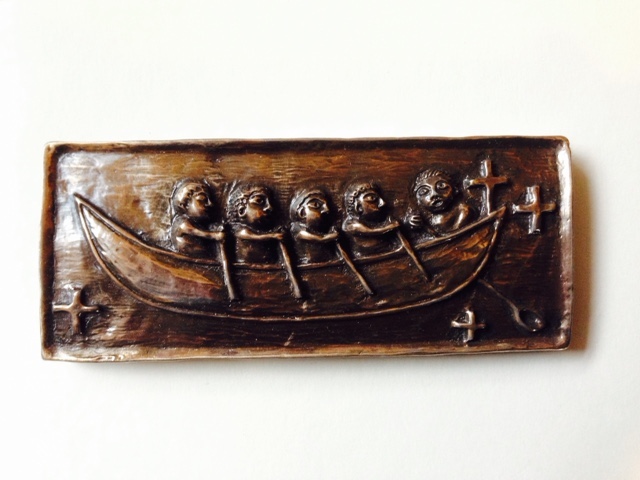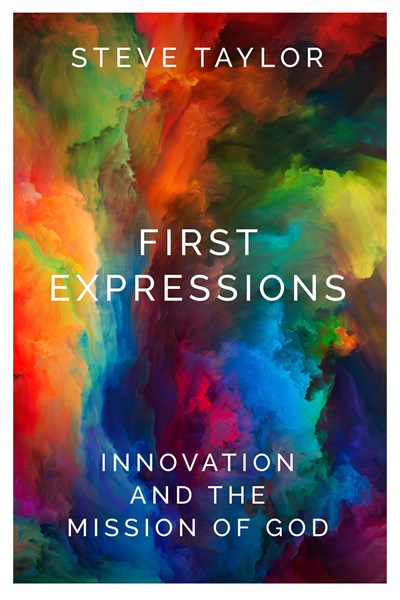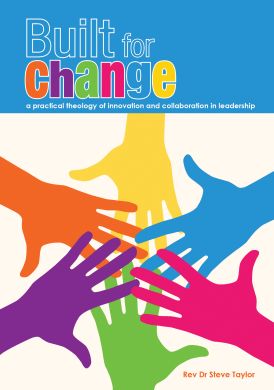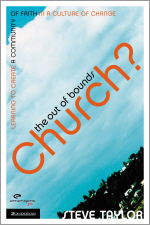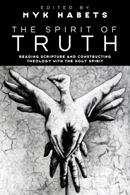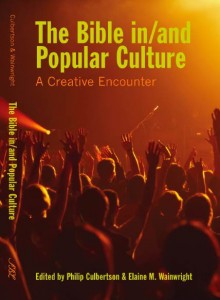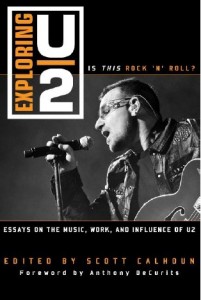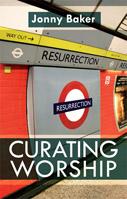Wednesday, March 14, 2012
Jesus deck in chapel worship
 I used the Jesus Deck in worship at College Chapel today. As it always does, for some people, the card they chose speaks to them quite profoundly and the ensuring conversations are rich, full of God entwining with a person’s story.
I used the Jesus Deck in worship at College Chapel today. As it always does, for some people, the card they chose speaks to them quite profoundly and the ensuring conversations are rich, full of God entwining with a person’s story.
 For those who not aware of the Jesus Deck, it is a set of cards originally designed as a Christian education tool in the 1970’s. The designs are quite dated, which in themselves becomes part of their charm. In recent years, some Christians realised that for many people outside the church the reading of tarot cards has enormous interest. The Jesus Deck offers a point of connection, an opportunity to dialogue, a starting point around the Biblical story for conversation and exploration. (For more on the use of the Jesus deck, go here or here, or buy the book Beyond Prediction: The Tarot and Your Spirituality
For those who not aware of the Jesus Deck, it is a set of cards originally designed as a Christian education tool in the 1970’s. The designs are quite dated, which in themselves becomes part of their charm. In recent years, some Christians realised that for many people outside the church the reading of tarot cards has enormous interest. The Jesus Deck offers a point of connection, an opportunity to dialogue, a starting point around the Biblical story for conversation and exploration. (For more on the use of the Jesus deck, go here or here, or buy the book Beyond Prediction: The Tarot and Your Spirituality.)
The Jesus Deck is quite hard to get (I got mine a few years ago via the internet) and a group are trying to organise a reprint. If you’d like to be part of that, contact them on jesusdeckinfo at gmail dot com.
Anyhow, back to chapel. As the lectionary text for this Sunday was John 3:16, I was looking for a way to engage people with the whole of the Jesus story. The Jesus deck, with its rich range of examples, was perfect. As people entered, I invited them to take a card, which they sat with as the worship began. During the worship, I invited them to reflect on the card. As we came to communion, I invited them to lay their card on the communion table. Thus as we “remembered” the life of Jesus around bread and wine, we also had this visual reminder, these cards scattered on the communion table.
And, as we finished, some folk naturally just stayed standing around the communion table, sharing their card and how it connected with their life story.
For another example of using the Jesus Deck in worship, see here.
Wednesday, March 07, 2012
feeling the cross in Lent
Creationary: a space to be creative with the lectionary (in this case, visual images on themes of pilgrimage). For more resources go here.
Yesterday I ended chapel by inviting us to feel the cross. The lectionary text for this week is John 2, where Jesus calls the temple. We’d been using El Greco’s painting as a visual aid, to help us engage the story.
When I curate worship, I like to provide something tactile, something to touch, something that engages more of our senses than just ears to listen and mouths to sing.
 Last year, while on study leave in the UK, I brought a small carved wooden pilgrims cross. So I suggested that as a benediction, we pass the cross around. As each of us hold it, we might remind ourselves of the invitation to carry the cross into our day, our week and through Lent. It was quite lovely, watching folk pass it from hand to hand, the different ways folk held it, the sense of us together becoming a cross-carrying community.
Last year, while on study leave in the UK, I brought a small carved wooden pilgrims cross. So I suggested that as a benediction, we pass the cross around. As each of us hold it, we might remind ourselves of the invitation to carry the cross into our day, our week and through Lent. It was quite lovely, watching folk pass it from hand to hand, the different ways folk held it, the sense of us together becoming a cross-carrying community.
And of course, there was another whole layer provided by the lectionary text. We are not meant, like Jesus in John 2, to carry a whip. Rather we are called to carry peace, the way of non-violence, as we confront structures.
For those interested, this is the entire service (needed to be 20 mins), that included the lectionary Psalm and gospel, interaction in praise and around Scripture, some art, intercession for justice-makers, communion. And feeling the cross by way of benediction! (more…)
Tuesday, February 14, 2012
writing on windows
Great chapel today, creatively led by Sarah Agnew and Michelle Cook. The adoration station invited us to write words of thanks. On the window!
Yep. Liquid chalk.
An idea that deserves a mention in the creationary: a space to be creative with the lectionary (in this case, visual images on themes of pilgrimage). For more resources go here.
Full service here.
Wednesday, November 30, 2011
the place of apt liturgy in fresh expressions
In marking, I tend to engage in student work with at times quite extensive written comments. Here, with an introduction to give some context, are some thoughts I wrote in an assignment I marked today.
“Apt liturgy” is a wonderful phrase, from Ann Morisy in her book, Journeying Out: A New Approach to Christian Mission.
“Liturgy if it is to be described as “apt” needs to express people’s deepest fears and hopes. Apt liturgy should also enable people to put their fears and hopes into a wider context by sensing the resonances between their own situation and humankind as a whole. One of the costs of the low level of religious literacy in our society is that people are deprived of the conceptual tools which could help them to locate their circumstances, both positive and negative, in a more universal framework. Apt liturgy is a way of providing a framework of understanding which helps people to move beyond self centered and narrow horizons.”
This invites the role of poet, the gift of seeking to name/give voice to the work of Spirit. I find it helpful to frame this by considering the work of the Spirit. Such thinking will begin with Romans 8:23, the Spirit groans in the world. Thus, good apt liturgy will give voice to this groaning. To be faithful, it must start by listening to people, to popular culture, to the world outside the church and to naming their groanings.
This listening must be seen as part of a process. As it is in Romans 8, for after verse 23 comes verse 27, in which the groaning of Spirit is always a groaning toward God. Thus apt liturgy is a way to participate in the Spirit (the One who is at work in the foundational domain, to use another term from Ann Morisy) in the journey from Romans 8:23 toward 8:27.
Another way to understand “apt liturgy” is in reference to Luke 10:1-12, and in light of the proposal “any experience is an educative experience” (Robert K. Martin, “Education and the Liturgical Life of the Church”, Religious Education 98:1 (Winter 2003), 61). Luke 10:1-12 assumes that mission begins with the ability to listen. As this happens, one will recognise healings, interpreted in light of the speaking of peace/shalom. This draws on the Old Testament understanding of God who cares for people and place and thus healing can include physical, spiritual, relational and with the whole of creation. In Luke 10, it is only after healing is recognised that the Kingdom is named as near.
This is “apt liturgy”, recognising healing in a context and linking it with the Kingdom mission of Jesus. In this way, the experience, the participation in healing, becomes educative of the Kingdom.
This calls for a different kind of liturgy leader skill set. One still needs to know the tradition, to know of the Kingdom, and not just superficially, but at such depth, that we can connect it with experience ie what is happening, rather than bringing a liturgy package from the shelf/book/internet.
Sunday, November 27, 2011
social media and music participation: Black Seeds ‘Pippy Pip’
Fascinating use of social media by Kiwi band The Black Seeds. They have a new album to be released early next year and they want to create a big group vocal for one of their new songs, ‘Pippy Pip’. So they are calling on their fans to record themselves singing, to upload it online and to be mixed into the song! (Those taking part will also be able to purchase a special edition CD that includes their names in the album credits!)
Open to anyone. You don’t need to be a great singer – you just need a web cam/camera and some headphones.
And here’s some examples
So get singing!
Friday, November 11, 2011
a story of (un)skillful worship and the mission implications
(I wrote this on a piece of work I was marking today. For me, marking is not about the grade, but about the learning opportunities being created. In this case, I wondered if a story might help clarify the issue a student was wrestling with – understanding worship in missional contexts.)
I was speaking at a conference a number of years ago. When I finished, a person got up to lead closing prayers. They began by noting key features of the day, a few skillful phrases that reminded us of high points. Together we laughed, and nodded, and sighed.
I thought it was a call to worship – it was drawing us together, not as individuals but as a gathered group. It was named (thankfully) God in our midst. I was admiring the skill when the person stopped and said “now we will start worship, with a call to worship. Please turn in your books …”
For me it showed both skillful and unskillful worship. It showed the ability to work with what is, to read context, to read communities, to use phrases to express communal praise.
In contrast to a repetition of words from books. The irony is that in origin, all calls to worship were most likely so skillful, so context appropriate, so life giving that they were repeated. And borrowed. By writing down. And repeated. So that over centuries, they become empty repetition removed from the context and events that gave them birth.
I think the skill of missional worship, is to be able to connect the liturgical forms and richness of the wider church with context and in context appropriate ways. (This is the DJ image I use in chapter 8 of my Out of Bounds Church book.) This requires the ability to read a context, the knowledge of the storeshouses and the skill to weave them together.
Not new for news sake. Nor repetition for repetitions sake. But the skillful movement between the context of life and the storeshouses of the church universal (through time and space).
Sunday, September 11, 2011
magical night: Review of Shaun Tan’s Arrival
 Just back from a magical night at Her Majesty’s Theatre, experiencing Shaun Tan’s The Arrival, put to music by composer Ben Walsh. A visual and auditory experience that over 1 hour 15 minute, engaged The Arrival
Just back from a magical night at Her Majesty’s Theatre, experiencing Shaun Tan’s The Arrival, put to music by composer Ben Walsh. A visual and auditory experience that over 1 hour 15 minute, engaged The Arrival, which is a wordless graphic novel of immigration, 128 pages that explore the displacement and unexpected grace of being in a new country.
I came away stunned by the ability to connect and story tell, without words. One hour and 15 with NO words.
I came away reminded of the importance of being invited to pause, forced to take the time to dwell, and in so doing to discover meaning.
I came away struck by the potential for all-age worship, kids aside, in front and behind, all transfixed.
Why can’t church be a wordless, intergenerational invitation to pause and ponder?
I came away reminded anew of the enormous courage required to migrate and the reliance of the generosity and time of the host culture. (No Taylor’s cried that I am aware of!) Tan’s father is a migrant from Asia. Now here in Australia we delight in Tan’s art and I can’t help wondering how many more Shaun Tan’s might be in the next load of migrants washing up on Australia’s shores.
Shaun Tan is an Australian treasure, a noted illustrators of picture books and young people’s literature. I’ve blogged before about discovering his book, Eric and the theology of hospitality buried in illustrations.
Monday, August 15, 2011
outdoor stations as fresh expressions
Over the weekend we had our mission-shaped ministry weekend away. Rather than withdraw to a rural campsite, which seemed at odds with the mission approach of the mission-shaped ministry course, we headed to West Lakes Resort, a conference centre in Adelaide city. Money saved on accommodation and exclusive use of a venue was put into a food and open bar on the Friday night, and the use of a conference room for evening and all day Saturday sessions.
West Lakes resort backs onto water, so as I prepared to lead the worship on Saturday afternoon, I was keen to maximise this opportunity. I adapted an idea from earlier in the year (see here. I introduced the idea of stations.
- They can be used, as we had experienced on the Friday evening, to allow a way to engage material at an individual pace
- They can be used, as the ancient church did, as an aid to physical pilgrimage, providing mediation places in the city of Jerusalem
- They can be used, as the medieval church did, as an aid to spiritual pilgrimage, providing meditation places in a church building
- They can be used as outdoors as well as indoors. And so I offered people a prepared card
Followed by the opportunity to worship by walking outdoors. When you come across a sky “station” or a flower “station” or a pavement “station”, to use them as invitations to prayer and reflection.
Feedback was very positive, people loving the chance to be outdoors, to be among people. And as usually happens, most came across 5th, 6th, 7th stations, other things though which God spoke.
Which all underlined the theology of fresh expressions and the input of the day, that God is active in the world, and we are simply invited to participate in that activity. Which starts by paying attention. In the words of Rowan Williams:
Christian mission is “finding out where the Holy Spirit is at work and joining it.”
Thursday, August 04, 2011
worship when a changing world means a changing mission
Last night was the second week of the Adelaide mission shaped ministry course. With 2 new faces, there are now 47 registered. With the nerves of the first week gone, there is momentum in the air. My task is to lead worship and the hope is that all the worship is done in ways that are different, ways that offer possibilities.
The theme of week 2 is the mission of God. So I begin (the call to worship) with the teaser from the movie Up.
It seems to capture mission as risk, surprise, adventure. And so we say together, a missional paraphrase of Romans 8: This resurrection [mission] life you received from God is not a timid, grave-tending life. It’s adventurously expectant, greeting God with a childlike “What’s next, Papa?”
The next task is the task of prayer. This is offered as an invitation to either ask/intercede or thank/praise. On every chair is a balloon. Half have words from our “changing world” homework, a word texted in by us, which I have written on the balloon. This becomes the task of intercession. As Jesus breathed on the disciples in the sending of the Spirit (John 20), so the invitation is to pray by breathing on our world, to blow up the balloon, praying for the mission of God in our changing world.
The rest of the balloons have words from the week 2 course notes – Scriptures that speak of mission, names of mission moments in history, words from the Anglican 5 marks of mission. This becomes an invitation to praise, to give thanks. As Jesus breathed on the disciples in the sending of the Spirit (John 20:21-23), so we are to breathe thanks, to blow up the balloon, thankful for the mission of God in which we participate.
And so the room begins to breathe. As we finish our prayers, we tie our balloons, our breathe prayers. And we repeat together, the missional paraphrase: This resurrection [mission] life you received from God is not a timid, grave-tending life. It’s adventurously expectant, greeting God with a childlike “What’s next, Papa?”.
And we bat the balloons around the room, our joyful, playful, participation, our worship, when a changing world means a changing mission.
(Note, this might also work as a Creationary: a space to be creative with the lectionary if the Bible texts were John 20 or Romans 8). For more resources go here.
Monday, July 25, 2011
smelling the Bible: parables of mustard seed, yeast, treasure, pearl, net
On Sunday I was guest preaching. The lectionary texts were the parables of mustard seed, yeast, treasure, pearl and net in Matthew 13. As part of the sermon, I decided to explore a more multi-sensory approach to the Bible and deliberately tried to engage the senses, especially the sense of smell. (For more on smelling the Bible, see here). For those interested in how the senses might be engaged in a sermon (more…)
Sunday, July 24, 2011
the outsider: creationary storytelling Matthew 13 parable of treasure
A creationary: a space to be creative with the lectionary. For more resources go here.
The man arrived by shiny 4 wheel drive. An outsider, branded by his clean lines and secretive ways. Disappearing at dawn. Returning at dusk. Avoiding campfire conversation.
A month later he gives in. Finds the local country pub and sadly shares his story.
“I’m from NASA. Your land, these outback ranges, is reputed to be the site of a unique mineral deposit, with rocks essential to our space programme. Which means I’ve had a top secret mission.”
Slowly he pulls a rock out of his pocket. “I’m looking for these. From dawn to dusk. Searching your outback.”
Wearily his head leans onto the bar counter. “Have you ever seen anything like this?”
The bar owner peers hard. Bends down. Pulls a bucket out from under the counter and empties the contents over the bar. Identical stones run everywhere.
“Sometimes you simply need to ask, rather than look,” he grins.
“The kingdom of heaven is like treasure hidden in a field.” (Matthew 13:44). (Based on a true story heard over coffee today.)
Friday, July 22, 2011
creationary: Mattthew 13 parable of mustard seed
A creationary: a space to be creative with the lectionary. For more resources go here.
For those working on the parable of the mustard seed for Sunday, there are some great pictures – “smallness of the tree” here; birds in a mustard tree here. Regarding permissions, the website does say (generously) that the “photos and text are in the public domain. No other author may copyright them”
For me, I’ll be using Matthew 13:52 – new and old – as the integrative theme.
I will be giving
– some of the people, as they come in, a google map of their local community
– the rest of the people, as they come in, a picture of the church
I’ll also as people come in, give them an envelope in which there is a mustard seed, some yeast, a pearl, and some treasure. I’ll also have a net hanging up the front of the church.
So I will offer some “Jewish context info” for each parable and then pause and ask folk, using verse 52 – what smells old, what smells new. So interaction together about the way the parable is actually working.
And then I’ll finish by asking those with a map of the community what the parables mean to the community, and those with a church picture, what the parables mean to folk in the church. This will allow some communal discussion of the application, plus is also consistent with the Matthew 13 text, in that two of the parables (mustard seed and yeast) are delivered to the wide crowd, while two (treasure and pearl) are given to the disciples.
I will probably conclude with the Paul Kelly song, from Big things little things grow.
Friday, July 15, 2011
God touched me downunder
In my last blog post, I reflected on smell and spirituality. It turned out to be quite a profound learning experience for the class. So, encouraged, this morning I introduced touch and spirituality.
I began with a mediation. I invited the class to think about returning home at the end of the day. To get out of the car. To enter their home. To imagine their lounge, then bathroom, then bedroom. And in each place to look around and consider what kind of things you find pleasure in touch?
I then noted the importance of touch in Christianity – in baptism, during Ash Wednesday, as we say the peace, as we participate in Communion. I noted how Jesus was touched – wrapped in swaddling clothes, circumcised, taken in Simeon’s arms, in baptism, in the passion. And how Jesus touches others – little children, the leper, in bread broken and cup offered.
And then invited reflection on what kind of touch experiences have been important to us in our spiritual journey.
Together we said a prayer
Lord, You knew the touch of love
You knew the touch of friendship
You endured the kiss of betrayal
You endured the crown of thorns
Help us to touch others with your love
Help us to touch others with your friendship
Help us to heal the wounded hearts
Help us to heal the scars and hurts. Prayer from Sense Making Faith.
I then gave out fabric, raided from the home sewing stock. Each person got 4 pieces. (They were allowed to swap if they got stuck.) And the invitation, to express our text for the week (Luke 1:39-45), using their four pieces of fabric. People worked away, some with silk and string, others with weave and fabric.
And then the question for group discussion: What had we learnt, freshly, about the Biblical text? And about ourselves?
Oh my goodness.
We were still going some 90 minutes later, sharing, learning, reflecting. It was a rich, rich conversation on a learning exercise that in some ways was so simple. Yet had become profound.
One conclusion (among many): that as Christians we are “out of touch”, simply because we have ignored the senses in our faith.
A note: The shape of this exercise owes much to some material (pun intended) from Sense Making Faith which is a wonderful resource. For more on how it can be used, not just in a class, but in church and in mission, go here.
Wednesday, July 13, 2011
confessions: the place of ikea in worship and teaching
Dear Ikea,
I love your shop. I love the creativity of good design. I love the way that the confines of space become a springboard to creativity. I love it so much that today I taught my class in your shop. We arrived at 1 pm and and we left at 3 pm.
First, because we had talked in the morning about the importance of environments. So moving from a class to lunch at your place provided an experience of a different environment. This led to a profitable discussion as we compared your space with church spaces.
Second, I gave out to the students one of your shopping lists and cute little pencils. The students are all working on a project for Friday. And since the confines of space can become (as you know so well) a springboard to creativity, in order for students to experience this, they were invited to choose (not buy) one thing from your shop for use in their project.
Third, we were due to talk about spirituality2go, about providing ways to resource spirituality beyond the gathered congregation. I placed a whole lot of my previous ministry ideas in a box in the middle of the table at which we were sitting. The class took turns to pull out an idea, at which point I shared the creative processes that led to that idea. (A lot more ideas are on my website – either under the heading worship treats, or preaching today or Creationary (a space to be creative with the lectionary).)
However, all of this is not what I need to confess. What I need to confess is this …
 that I am the one who (absent-mindedly) took the help yourself little black tongs from your bread roll container.
that I am the one who (absent-mindedly) took the help yourself little black tongs from your bread roll container.
I apologise for my neglect, for interpreting help yourself to apply to the tongs and not the bread rolls.
I trust that your dishwashing staff recognised these little black tongs and have now returned them to their rightful place,
Signed,
Steve Taylor
